The PrimaLuna DiaLogue Premium HP Integrated Amplifier at £2,998 is billed as a fit an forget valve amplifier that avoids many of the  headaches traditionally associated with valve amp ownership. Ian Ringstead takes one for a spin. More »
headaches traditionally associated with valve amp ownership. Ian Ringstead takes one for a spin. More »
Janine Elliot takes a listen to the distinctly art-deco looking (and named) phono-preamplifier from Zontek in Poland costing €8990 and having three inputs, allowing for three arms on your turntable. More »
“Has Icon Audio founder David Shaw designed the ultimate triode amplifier?”, asks the company’s latest press release. Previewed ![]() at September’s National Audio Show and created to fulfil a personal ambition, these gargantuan amps will be sold in limited numbers as a special edition.
at September’s National Audio Show and created to fulfil a personal ambition, these gargantuan amps will be sold in limited numbers as a special edition.
“If I’m completely honest,” says Shaw, “for much of the past year I’ve been building my own birthday present – and this is it!”. After discovering a quantity of ‘new old stock’ Russian GU81 transmitter valves, Shaw began to work on a prototype amplifier that would achieve a long-held goal: to effectively drive any modern low-efficiency high-end speaker to realistic levels.
At 260 mm tall, 100 mm in diameter and weighing in at 1 kg, the GU81 is a BIG valve. Although the GU81 remains in production, Shaw still favoured the ‘new old stock’ valves for the MB81.
Shaw has long been a fan of triode operation believing it the purest form of valve amplification. But triodes typically have a downside too: limited power output, which to overcome presents real a design challenge. Says Shaw, “Our pursuit for making ever-better amplifiers often leads us into uncharted territory. This is such an example and it’s been a genuine labour of love. I’ve spent many, many months designing and listening, listening and redesigning.”
In the Icon Audio MB81, Shaw has produced a triode monoblock that can deliver an astonishing amount of power into even the most demanding of loads. These massive amps are about 50% bigger than the current Icon flagship MB845MkIIm and weigh around 100 kg per pair. The specification is impressive: 250 watts RMS continuous output into an 8 ohm load whilst “complex” tertiary output transformers minimise distortion while allowing “unbeatable bass power and authority”.
“Following our work with other big triodes, we wanted to build an amplifier that would deliver plenty of power to drive the largest inefficient speakers with ease in pure triode mode, in very large rooms,” explains Shaw.
“Although many large speakers are generally efficient,” he adds, “their complex crossovers full of capacitors and inductors often present a difficult load for an amplifier, especially if it’s running with less than ideal power.”
Icon Audio believe the MB81 to be the world’s first ever push-pull GU81 amplifier. While it was initially developed as a personal gift for Shaw himself, he plans to produce a small number for sale as a very special limited edition. “This is probably the most amazing amplifier we’ve ever made,” says Shaw, “so it would seem churlish not to share it”.
Price will be £12,500 a pair.
The SteamAmp II from Coppersteam.com is the second iteration in the SteamAmp line and we think it looked great and certainly  worthy of a mention in Hifi Pig’s news section. Its circuit follows the original, and is based upon the S5 Electronics K12G Kit. The power supply caps and signal coupling caps have been upgraded, and snubber caps have been installed on the heater circuit. The output transformers were upgraded with Iron from Edcor.
worthy of a mention in Hifi Pig’s news section. Its circuit follows the original, and is based upon the S5 Electronics K12G Kit. The power supply caps and signal coupling caps have been upgraded, and snubber caps have been installed on the heater circuit. The output transformers were upgraded with Iron from Edcor.
The amp puts out 8 watts per channel, and has 5 inputs; 4 RCA pairs on the back, and a 1/8th jack on the front for MP3 players and the like. The volume is controlled by an 11-step attenuator. The tubes are 10GV8 Triodes in push-pull configuration.
The chassis is solid 3/4” Black Walnut with 1/8” Copper plate top and front panels and the transformer cans are constructed from 3 and 4” copper pipe caps. There are 4 glowing rods inside the glass window on the front that are lit by UV LED’s when the unit is powered on.
This piece was built as part of a commissioned system for a gentleman in Connecticut and will be finished out with a matching set of speakers.
The Atlantic from Tron is one of the smallest 300B amps ever made with a footprint of just 40cm x 25cm. Power is between 9-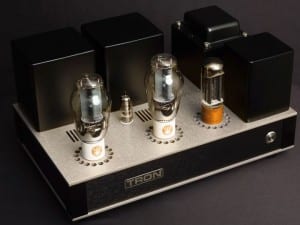 10watts across the audio spectrum (20-20kHz) and with a usable bandwidth up to to 95kHz (-3dB).
10watts across the audio spectrum (20-20kHz) and with a usable bandwidth up to to 95kHz (-3dB).
The chassis is made from CNC machined Aircraft grade alloy, designed so that no nuts, bolts or fasteners show. It is fitted with two unique DC filament supplies for heating the 300B output valves.
A D3a valve used in the driver stage and the complete amplifier is all designed, manufactured and assembled in England.
Specification:
9 watts per channel with 4, 8 and 16 ohm outputs.
C-Core output transformers.
C-Core chokes.
D3a driver stage.
Electro Harmonics 300Bs.
Teflon valve/tube bases.
CMC input RCA connections.
Very short signal path.
Valve rectified power supply.
Audio grade parts selected for outstanding sound.
The Atlantic is available in Silver & Black, Gold & Black. Gold & Red is also available to special order.
Available voltage versions for 100v, 117v, 220v, 230v, and 240v mains.
The Atlantic can be available at “Reference” and includes:
WBT Next-Gen speaker terminals
Special OFC wire for both the input and output connections.
From £6750
McIntosh Laboratory has launched the new C2500 – a valve preamp with 15 inputs. Designed to offer flexibility with 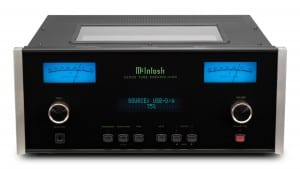 both digital and analogue source components, the new C2500’s input complement includes two dedicated phono inputs (MM and MC) and five digital inputs, with D/A decoding at up to 32-bit/192kHz resolution.
both digital and analogue source components, the new C2500’s input complement includes two dedicated phono inputs (MM and MC) and five digital inputs, with D/A decoding at up to 32-bit/192kHz resolution.
The five-strong digital input suite in the McIntosh Digital Engine includes two coaxial and two assignable optical inputs at 24-bit/192kHz resolution, plus a dedicated asynchronous USB 2.0 input operating at up to 32-bit. The preamp’s analogue inputs include six line-level, two balanced, plus the aforementioned Moving Magnet and (adjustable) Moving Coil inputs. The C2500 also includes McIntosh’s new internal High Drive headphone amplifier, which offers increased gain and output power.
Internally, the C2500’s power supply, digital and control circuitry has been isolated from the analogue section and the C2500 boasts the best measured performance of any single-chassis McIntosh tube preamplifier.
The C2500 contains six dual-triode tubes (12AX7A) and further features include assignable tone controls (as needed), and the ability to connect up to three power amplifiers, two of which can be switched on and off for simple multiroom configurations. A Home Theatre Pass Through feature also allows for integration into existing multichannel home theatre systems.
The C2500 sells for £7,495 and is available now.
Canadian manufacturer Coincident Speaker Technology have announce their first stereo integrated amplifiers, the  Turbo 845SE and the Dynamo 34SE (Pictured).
Turbo 845SE and the Dynamo 34SE (Pictured).
The Turbo 845SE is constructed as true dual mono in every way with the only shared component between the two channels being the chassis. The Turbo is built on the same chassis as the company’s current Dragon MK II amplifier.
Specifications:
Single Ended 845 Output- 28 watts per channel
Pure Dual Mono
All hard wired
6N copper Japanese Steel proprietary power and output transformers
6EM7 input , 300B driver per channel
3 RCA inputs
Discrete Resistor volume control
Voltage selectable 115V/230V
AC ground lift
Remote control volume- mute.
Frequency response: 20 hz- 20khz – flat
Sensitivity: 1V for full output
Input impedance: 100 K ohms
S/N Ratio- 90 db
Weight; 100 lbs
Price :$5499 US
The Dynamo 345SE is a single ended triode tube amplifier that offers 8 watt pre channel.
Specifications:
Single Ended EL 34 output- 8 watts per channel
6SL7 input/driver tube, 5U4 GB rectifier tube
All hard wired
Stainless steel mirror finish chassis
Output impedance : 4, 8 ohms
Voltage selectable: 115V/230V
Frequency response: 20 hz- 20khz- flat
Sensitivity: 300 mv full output
Input impedance : 100K ohms
S/N Ratio- 88 db
Weight: 22 lbs
Price : $999 US.
Purity Audio Design of Endicott, New York, will officially debut their Series 2 Silver Statement linestage preamplifer  along with their PSE300B Ultra mono bloc amplifiers (pictured) which in turn will be driving Daedalus Audio loudspeakers at Axpona 2013 in Chicago.
along with their PSE300B Ultra mono bloc amplifiers (pictured) which in turn will be driving Daedalus Audio loudspeakers at Axpona 2013 in Chicago.
The pair of monoblocs come with 4 Sophia Electric Princess 300B, 2 Sophia Electric Grade A 6SN7 and 2 5U4 Rectifier tubes.
Frequency response: 10Hz-40kHz
Input Impedance: 100k Ohm single ended
Input Sensitivity: 250mV for full output
Maximum Output: 18 watts into 4, 8 or 16 ohm loads
Tubes 1 x 6SN7, 1 x 5U4G, 2 x 300B per chassis
Weight: 42 lbs each
Size: 12″ W x 15″ D x 11″ H (each chassis)
Fuse: 2A Slow Blow (120V Supply)
Power Consumption: 135watts
Hi-Fi distributor Sound Fowndations has announced the addition of the CANOR TP134 valve amplifier to its portfolio of 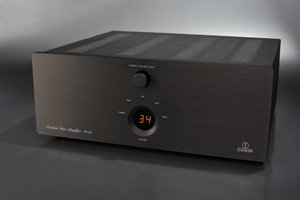 high quality audio components.
high quality audio components.
The CANOR TP134 is a high quality stereo integrated amplifier that uses EL34 output valves to generate 35 watts per channel operating in pure class A up to 10 watts per channel. The circuit boards feature patented CMT ™ (Canor Milling Technology) which means that areas of the circuit board are precisely removed to give the circuit similar electrical characteristics to one direct wired with air dielectric cables.
The TP134 features a high quality relay attenuator volume control which the company say provides a “more direct signal path with fewer contacts than typical volume controls leading to precise control and higher sonic performance”.
All control electronics, such as input switching and volume adjustment, are fed from a separate section of the power transformer and the control circuitry is only active when being used which Canor says avoids degradation of the sound quality of the amplifier.
Further the Canor TP134 boasts double copper foil shielding between the mains transformer to prevent mains noise from affecting the performance, a high capacitance anode power supply filtration providing “tight and accurate bass performance”, audiophile quality polypropylene capacitors in audio signal paths, custom designed bifilar wound output transformers “providing maximum power evenly across the entire bandwidth.
For the terminally lazy the TP134 is supplied with a remote control – Hifi Pig REALLY wants a remote control!
Price is £2495
The latest in the series of Conrad-Johnson vacuum-tube power amplifiers, the LP125sa is announced for release in 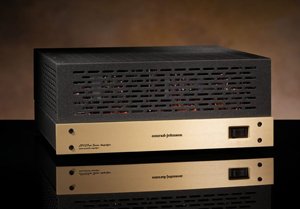 the UK by Audiofreaks distribution. The high-end amplifier is a single stereo block and, at 125 watts per channel has ample power for the majority of high-end loudspeakers.
the UK by Audiofreaks distribution. The high-end amplifier is a single stereo block and, at 125 watts per channel has ample power for the majority of high-end loudspeakers.
The LP125sa audio circuit consists of three stages. The input signal is amplified by a single-ended triode amplifier, the signal is then direct coupled to a cathode coupled phase-inverter and this high cur rent, triode phase-inverter stage provides a bal anced, low impedance drive to the output stage which is provided by two pairs of KT120s per channel.
The LP125sa boasts massive transformers and a small amount of loop negative feedback reduces distortion and achieves a reasonably high damping factor.
The power supplu in the LP125sa is a separate, low impedance, discrete dc affair and regulators are provided for the input and phase-inverter stages, “preventing the output stage from modulating these stages through the power supply”.
A built in bias meter allows for simple biasing of the valves.
The amplifier is available in a standard configuration for just shy of £8000 and a “plus” version with upgraded caps and resistors comes in at a fiver short of £10000.

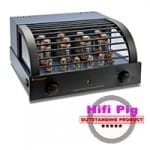
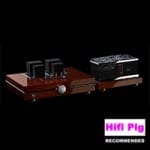

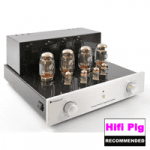
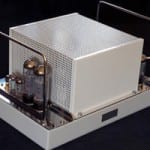


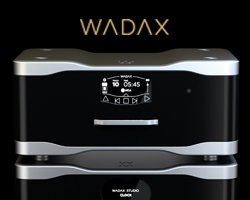
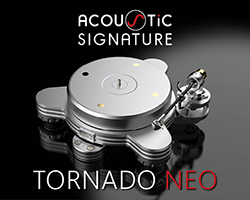


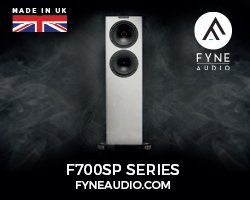
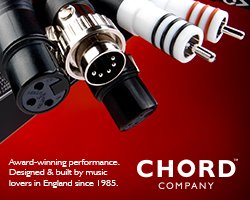




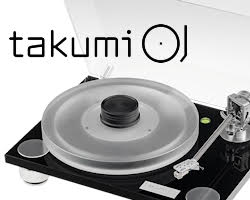
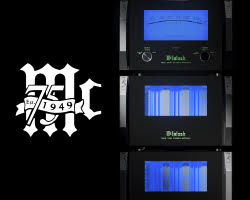












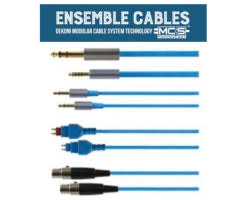

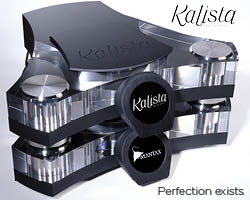
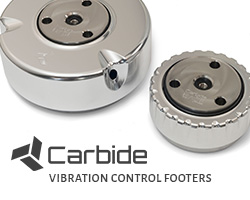
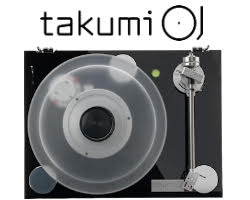

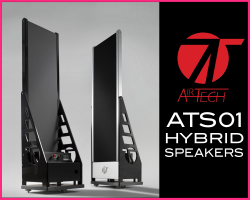


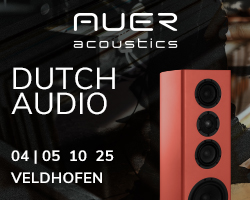


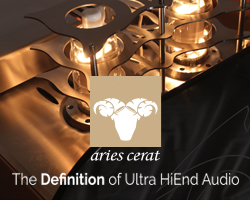


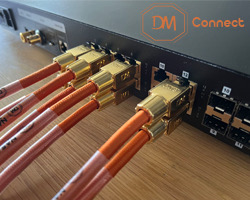









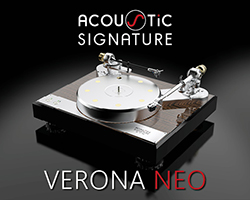




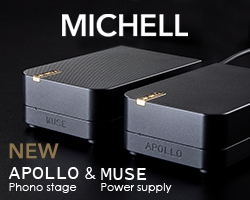








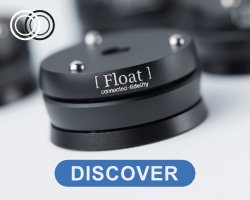




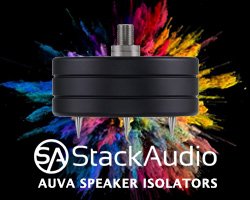
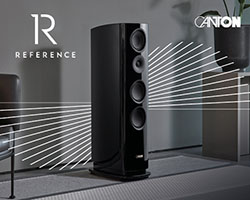






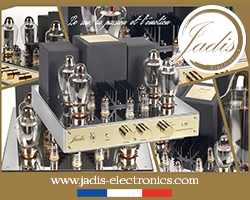




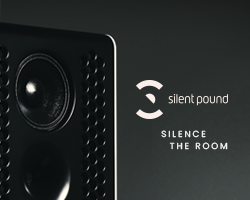
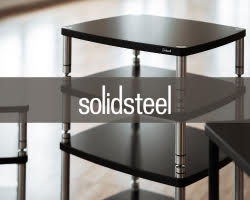


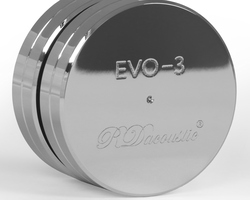


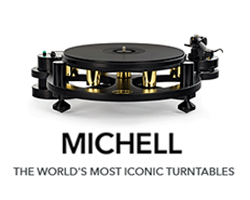



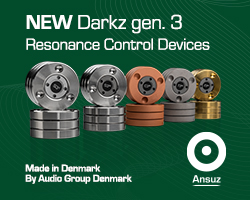



















































Leak Stereo 20
Janine Elliot takes a step down memory lane with the much loved Leak Stereo 20 power amplifier. More »